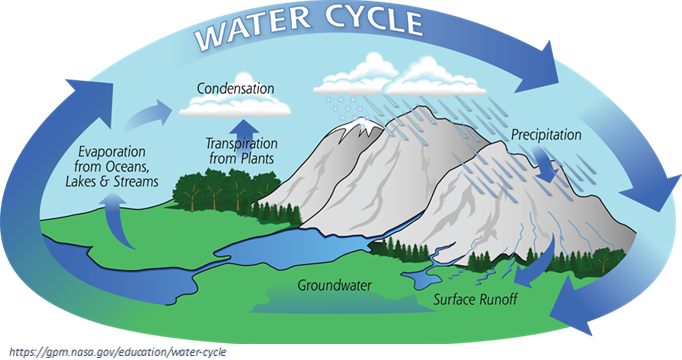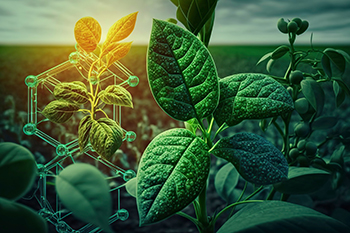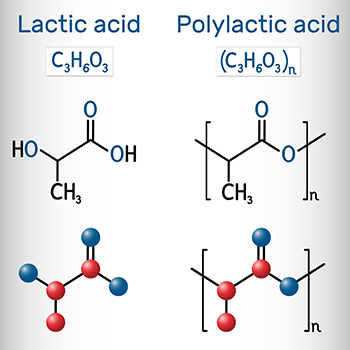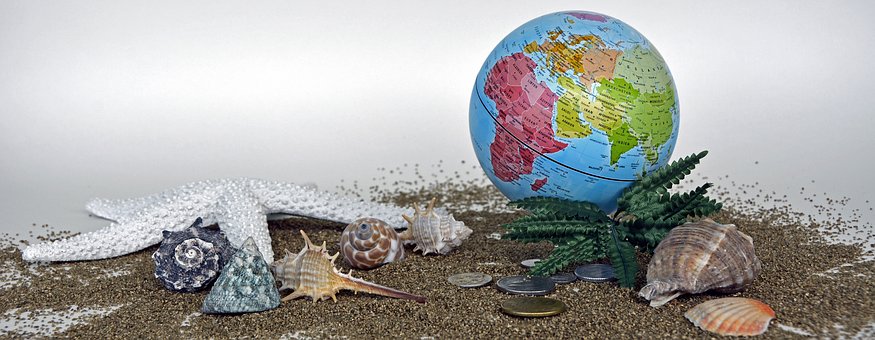Bioplastics
What is it? How is it Different From Ordinary Plastics?
Plastics made from renewable biological materials such as plants, waste or microorganisms are known as bioplastics. Bioplastics can be made from natural resources such as vegetable oils and starches. However, we must be careful as not all natural resources can be considered bioplastics. Plastics made from petroleum or natural gas are not bioplastics; these resources are not renewable. Renewable is defined as: a source [of energy] that is naturally replenished, such as water, wind, or solar power. Petroleum and oil are depleted when used, so these are not renewable.
That seems confusing, so let’s dig deeper (pun intended) and get to the bottom of this! The source of crude oil is found deep below the earth’s surface.[1] It is composed of elements of hydrodens and carbons. These are collected, chemically treated, or polymerized, which produces usable raw materials. Polymerization combines various elements producing the different types of raw material in the form of gases, liquids, and solids.
For example, PVC is polyvinyl and Chloride. Additives include stabilizers and lubricants. A third additive known as plasticizer adds a flexible trait to the material. Fillers and pigments are yet other forms of additives. Mixing polymers and additives is called compounding. The point is that crude oil-based plastics are made of a variety of elements.
The transformation of crude oil (from hydrogens and carbons) into petroleum or natural gas makes it non-renewable. Once converted, it is not replenished, it is not put back into the earth, rather it is depleted. Additional extraction and distillation will produce more petroleum, hence, natural gas, but this produces new resources, not renewed. In elementary schools we are taught that rain falls to the earth and returns to the clouds and falls as rain to the earth again. This process repeats; it’s circular; it’s renewable.
The only means, then, by which we can produce plastic is by drilling, polymerizing, and compounding. At least until now. Introducing bioplastics, which are polymers that are manufactured into a product from a renewable source or a natural source; just not crude oil based. The science of bioplastics has been active for a few years. It is a vast and rapidly expanding science. Some sources used to produce bioplastics materials include plants, from which oil is extracted. Renewable biomass sources such as vegetable fats and oils, corn starch, straw, woodchips, sawdust are a few of these types of sources.
 The production of bioplastics goes into much greater scientific details than will be discussed here but suffice it to say they are produced from renewable biomass sources and can be formed into a variety of items such as packaging, agriculture, medical, automotive parts and more. The result is the same as traditional or crude oil-based plastics, except that bioplastics can be biodegradable or bio-compostable. This is the primary difference over crude oil-based plastics and these two terms are significantly, drastically different.
The production of bioplastics goes into much greater scientific details than will be discussed here but suffice it to say they are produced from renewable biomass sources and can be formed into a variety of items such as packaging, agriculture, medical, automotive parts and more. The result is the same as traditional or crude oil-based plastics, except that bioplastics can be biodegradable or bio-compostable. This is the primary difference over crude oil-based plastics and these two terms are significantly, drastically different.
An extreme difference exists between these two terms, bio- degradable and compostable. Biodegradable plastics simply means the material breaks down over time into the original components like water, oxygen, and other molecules. In contrast, compostable bioplastics require human intervention to break down. Compostable isn’t something that can be done at home. This is very important to distinguish because these terms are often mistakenly used interchangeably. Another key and very significant factor is the length of time each bioplastic takes to break down. It may surprise you to learn that biodegradable plastics take years to break down. 100’s of years is a common reference to the degradation of these plastics. It must be stressed that compostable bioplastics requires specific conditions, and when those exist, these plastics can break down within days, weeks, or months.
Like traditional plastic that identifies the type of plastic by the use of resin codes PVC, PET, etc., (See “The Seven Plastics”), bioplastics have two common acronyms: PLA (polylactic acid) and PHA (polyhydroxyalkanoate). PLA extracts starch (natural sugars) from edible plants, sugar cane, and food waste. Then this is processed or compounded much like traditional plastics. This is often used to produce single-use items like take-out containers, straws, and cutlery.
PHA bioplastics are made from microorganisms and algae engineered to produce plastic from organic material. Scientists converted a strain of bacteria capable of consuming carbon dioxide and turn it into energy. In other words, carbon is fed to the microbes to encourage production of carbon reserves, which becomes the PHA material. PHAs are used in medical devices.
As with most innovative processes, bioplastics comes with controversies. The environmental impact of bioplastics is debated. Topics about high energy used to manufacture bioplastics only adds to greenhouse gases. Bioplastics need to be recycled similarly to traditional or mechanical recycling, which increases costs. In fact, bioplastics cost up to two to three times the cost of producing [petroleum based] PE or PET.
Furthermore, bioplastics currently contaminate the recycling stream making it more difficult to recycle plastics that are valid for recycling. This is due, in part, to some suppliers of bioplastics attempting to lower costs by adding fillers such as powdered agave, rice husks, sawdust, and avocado seeds. The fillers or additives create differences in material components, in effect contaminating the recycling stream.
In addition, the suppliers often tout these modified materials as compostable. The problem in the U.S. is that we don’t have the infrastructure necessary to compost these bioplastics on an industrial scale and home composting is not robust enough to break the materials down. This results in landfills replete with waste that could have been recycled.
The industry is young, which often yields a lack of standardization. The growing warnings about plastic from environmental organizations generated increased public awareness. Scenes of lands and oceans containing unimaginable amounts of waste are disturbing. This results in heightened demands by consumers for more environmentally friendly products. Official responses to public concerns resulted in a surge of interest and investment. Eventually, this will lead to greater emphasis on developing better ways with bioplastics. It is one of the fastest growing sectors of the plastics industry, anticipated to grow by 20-30% annually.
So where does this leave us? The great news is that technologies have emerged that allow existing plastics such as PET (beverage bottles and retail packaging) and HDPE (milk containers, detergent bottles) to be made from bio-based materials and recycled in the same recycling stream as their petroleum-based counterparts. This would not be possible without chemistry. Remember, components of plastics vary – some are very hard, rigid; some very soft or flexible. Some may be transparent. Without the compounding of the elements, the variations would not exist. This would also not be possible without technology. The above mentioned contamination of the recycling stream occurs when all these variations are thrown into the same mix. Sorting is required to ensure safe, effective recycling. Fortunately, technology assists with the sorting using spectroscopic techniques, which use near-infrared scanners to selectively identify bioplastics. PLA can be identified with 98% accuracy!
Like petro-based plastics, producing bioplastics begins with plants or microorganisms and breaking them down. Formulations are applied to create various types of plastics. By applying the same formulas as with oil-based plastics, a bioplastic is created. Bioplastics can also be reversed to revert the plastic item back to the chemical makeup. No matter the original source, petro-based or bio-based, the formulations create the same plastic. In other words, their chemical makeup and specifications are identical. Standard PET is petroleum based and Bio-PET is plant based. When used to manufacture a part, both will perform the same, both will break down the same, and both can be placed in the same recycling stream.
Watch for more content about this ever-growing, ever-changing, and always improving world of plastics!
[1] See Our Planet series “Crude Oil-The Original Plastic Source”
Additional references: Bioplastics for a circular economy | Nature Reviews Materials

